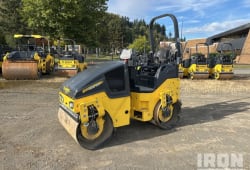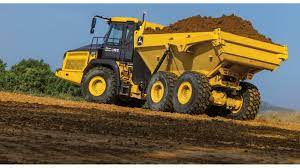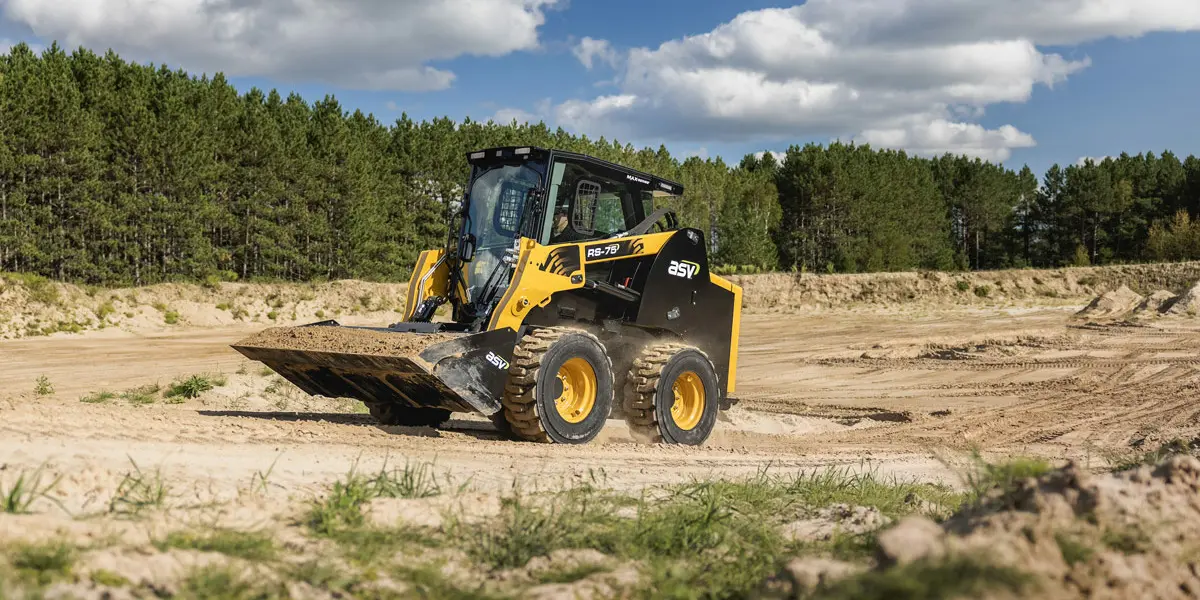Unveiling the Power of Earthmoving Equipment
7 Min read
)
May 14, 2024
Earthmoving equipment refers to a broad category of heavy machinery specifically designed for moving large quantities of earth, rocks, debris, and other materials during construction, mining, landscaping, and related activities. These machines are crucial for various types of projects, ranging from building bridges and roads to excavating foundations and mining minerals. Earthmoving equipment is typically powerful, durable, and versatile, capable of performing a wide range of tasks efficiently and effectively.
Here are the various types of earthmoving equipment and how they are used for you to know which is the ones that you will need:
Excavators:
Excavators are critical machines in construction, known for their exceptional versatility and efficiency in performing a variety of tasks. These machines feature a distinctive assembly consisting of a bucket, boom, and cab, all mounted on a rotating platform called the house. This setup allows for remarkable range and precision in digging trenches, foundations, and holes, as well as handling and lifting heavy objects. Excavators are available in multiple sizes, from compact mini excavators ideal for tight spaces and small-scale projects to massive hydraulic excavators that dominate large-scale construction sites and mining operations.
Tip: When selecting an excavator, consider the project's scale, the depth of excavation required, and the spatial constraints of the job site to choose a model that best fits the operational needs.
Bulldozers:
Bulldozers, commonly referred to as dozers, are robust earthmoving machines equipped with a large, sharp metal blade at the front for pushing material. Essential for tasks such as rough grading, site preparation, and road construction, bulldozers excel in moving and leveling earth and clearing debris. They are available in various configurations, including the traditional crawler bulldozers, which provide exceptional ground holding capability, and wheeled bulldozers, which offer enhanced mobility.
Tip: Evaluate the terrain and material density to determine the most suitable type and size of bulldozer, ensuring it has the power and features necessary for the specific ground conditions of your project.
Loaders:
Loaders are indispensable in the construction industry, used primarily for loading, transporting, and dumping a wide range of materials, such as soil, gravel, and debris. These machines are characterized by their front-mounted buckets or scoops, which can be manipulated to lift and move materials efficiently. Loaders come in several forms, including wheel loaders for larger loads, skid steer loaders for agility in confined spaces, and backhoe loaders, which combine the attributes of excavators and loaders.
Tip: Consider the material weight, the height of lift required, and the job site's maneuvering space when choosing a loader, ensuring it meets the operational demands of your projects.
Graders:
Graders, or motor graders, are specialized pieces of equipment designed for creating smooth, flat surfaces with precision. Equipped with a long, adjustable blade, graders are crucial in projects that require fine grading and leveling, such as road construction and landscaping. They are instrumental in setting foundations, creating drainage ditches, and preparing base layers for asphalt.
Tip: Determine the level of precision needed for the finished grade, and consider the grader's size and blade adjustability to ensure it can accurately achieve the desired surface finish and slope.
Scrapers:
Scrapers are heavy-duty machines engineered for earthmoving tasks that involve removing, transporting, and dumping large volumes of soil or other materials. These machines feature a container or bowl that is filled during the scraping process and then emptied at a dump location, making them highly efficient for large-scale excavation and leveling projects.
Tip: When selecting a scraper, evaluate the volume of material to be moved, the hauling distance, and the type of material to ensure optimal efficiency and suitability for the task.
Dump Trucks:
Dump trucks are essential in construction for transporting loose materials like soil, gravel, and sand. Their hydraulic beds can be lifted to dump the load effectively. Variants include standard dump trucks for general tasks, articulated dump trucks for rough terrain, and off-highway dump trucks for large quantities and in mining operations.
Tip: Assess the volume of material to be transported, the terrain of the job site, and the accessibility to choose the right type and size of dump truck that matches the project requirements.
Compactors:
Compactors are used to compress soil, gravel, asphalt, and other materials to create a dense and stable substrate. Different types of compactors, such as vibratory compactors, smooth drum rollers, and pneumatic tire rollers, are selected based on the specific compaction needs of the project.
Tip: Analyze the material type, layer thickness, and required compaction density to select the most effective compactor type, ensuring a solid foundation for further construction activities.
Trenchers:
Trenchers are specialized machines used for digging trenches for utilities such as water pipes, electrical cables, and drainage systems. They come in various sizes and configurations, including chain trenchers, wheel trenchers, and micro trenchers. Trenchers are essential for underground construction and infrastructure projects.
Tip: Consider the soil type, desired trench dimensions, and environmental impact to choose a trencher that can efficiently perform under the specific conditions of your project.
Safety Tips on Using the Equipment
Inspection:
Conducting a comprehensive pre-use inspection of construction equipment is a critical safety measure. This involves checking for any signs of wear, damage, or mechanical issues that might compromise the machine's functionality or safety. Inspect components such as brakes, tires, fluid levels, and safety devices to ensure everything is in proper working order. Documenting these inspections can also help track equipment condition over time and identify when maintenance or repairs are needed. This proactive approach not only enhances safety but also extends the lifespan of the equipment.
Safety Gear:
The use of appropriate safety gear is non-negotiable when operating any type of construction machinery. Operators must wear helmets, safety glasses, high-visibility clothing, and sturdy footwear as basic protective measures. Additionally, when inside the cab of machinery, fastening the seatbelt is mandatory to mitigate risks in the event of a rollover or collision. Ensuring that all safety gear is in good condition and properly utilized significantly reduces the likelihood of injuries and enhances overall job site safety.
Focus:
Maintaining a high level of focus while operating heavy equipment is essential for preventing accidents. Operators should be trained to stay alert and be aware of their surroundings at all times. Distractions such as mobile phones, unrelated conversations, or multitasking should be avoided to maintain concentration on the machinery and the task. Operators should also be aware of other workers or equipment in the vicinity to avoid collisions and ensure safe maneuvering within the work area.
Secure Loads:
Properly securing loads is crucial for safe transport and operation. Use chains, straps, and other restraining devices that are rated for the weight and type of load being handled. Ensure that all fastenings are tight and regularly checked during transport, as vibrations can loosen restraints. Correct load securing prevents shifting that could unbalance the equipment and lead to accidents, ensuring stability and safety during the movement of materials.
Emergency Procedures:
Knowledge of emergency procedures is fundamental for every equipment operator. This includes knowing how to immediately shut down equipment safely, perform basic first aid, and use fire extinguishers or other emergency equipment. Operators should be familiar with evacuation routes and assembly points, as well as how to alert emergency services quickly and effectively. Regular drills and training sessions can help reinforce these procedures and ensure that every team member knows how to act in various emergency scenarios.
Include these tips on your routine to avoid accidents and to avoid OSHA Violations.

Samir Shah is the Co-Founder and Chief Product Officer of Boom & Bucket, where he leads the development of innovative solutions for buying and selling heavy equipment. With a background in engineering, product development, and business strategy, Samir has a track record of taking companies from concept to market success. Previously, he was the Head of Cat Digital Labs at Caterpillar, overseeing digital initiatives and product launches. He holds degrees from MIT Sloan and Carnegie Mellon, and he is passionate about tackling big challenges in underserved industries.














